

Do 17P

The Dornier Do17M and P were intended to be follow up improvements on the E and F versions. They were to be powered by Daimler-Benz DB 600 liquid cooled engines rated at 1000 H.P. for take-off. Owing to the demand for these engines in fighter aircraft, Dornier chose instead to use the Bramo Fafnir 9 cylinder air cooled radial engine with 900 H.P. for take-off and 1000 H.P. at 10,000 feet. The M and P were built in parallel with the M version being a bomber and the P being a reconnaissance version. It was found that the P version with the Bramo engine would not meet the specified range requirement so a smaller, lighter, more economical BMW engine (BMW 132) rated at 865 H.P. was used instead. The P version did not have the bomb sight and releasing gear and had cameras installed in the Bomb-bay. Except for structural strengthening to handle the increased power and loading the airframes were nearly identical to their predecessors. The M version had a very short service life as it was soon replaced by the Do 17Z. The P version soldiered on for some time as the reconnaissance role was less demanding.
The Kit
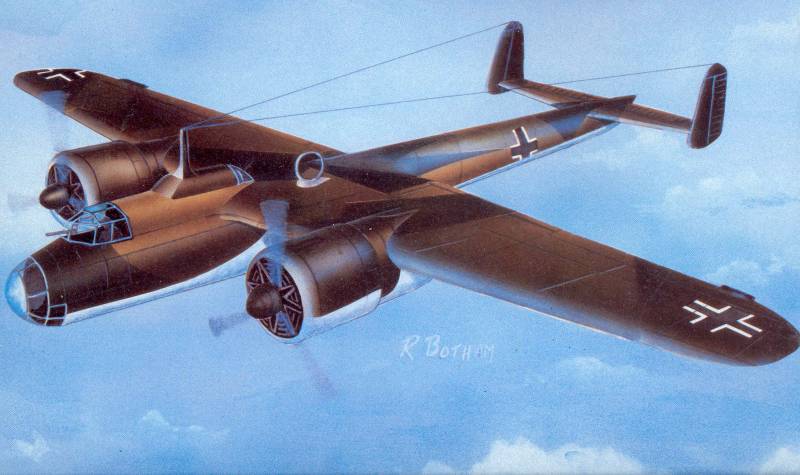
The Hobbycraft Do 17M/P comes in a large top open two part box that is much larger than needed. The artwork on the box is as uninspiring and inaccurate as the kit itself ! Inside the box there are two bags containing all the parts including the clear parts which would be much better off if they were bagged separately but in my case I won't be using them anyway so it doesn't matter. The parts are molded in a light gray plastic with recessed panel lines. The surface is smooth and I found no surface defects on the major airframe pieces. Flash is minimal and some of the small parts have a moderately heavy parting line to deal with. Like the Do 17E/F kit the fuselage is split top and bottom and the kit is essentially identical to that kit except for some items. The upper wing halves are different as they need to mate with radial engines as are the cowlings and engine nacelles. The radial engines are not particularly well done with a separate pushrod assembly that is a bit too large. Unlike the E/F kit this one provides bulkheads in the nacelles for mounting the landing gear but the whole arrangement is rather shaky. All of the comments \ accuracy in the Do 17E/F review found here, apply to this kit as well. I wish I could say something good about the kit but I'm hard pressed. Fit isn't all that bad and it does feature alignment pins so from that standpoint its better than many short run kits. Altogether there are 88 parts in gray although some of the parts are carry overs from the E/F kit and are not used. See photos below.
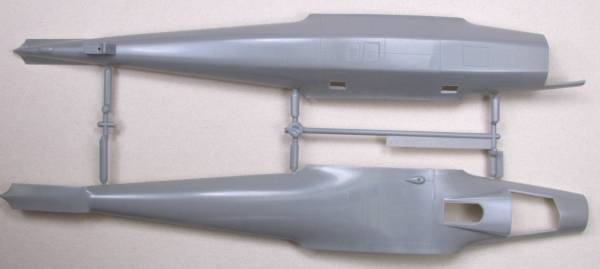
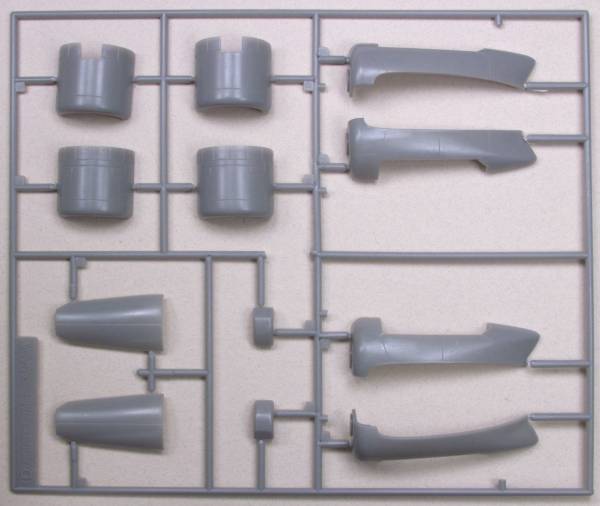
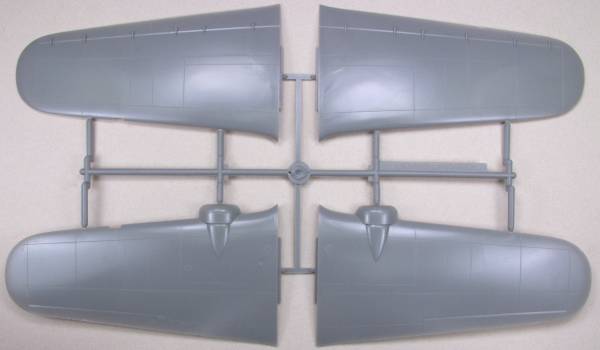
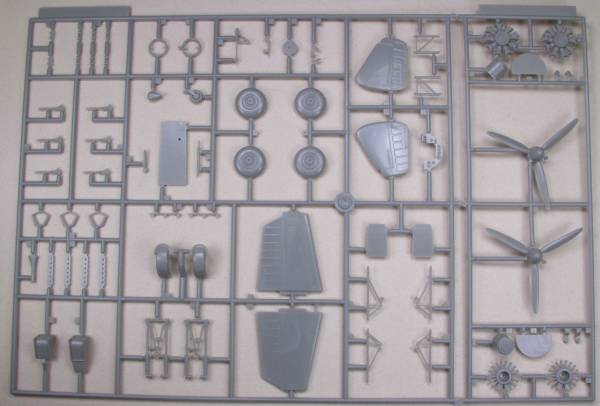
The clear parts are thicker than today's norm but reasonably clear and not very accurate. See photo below.
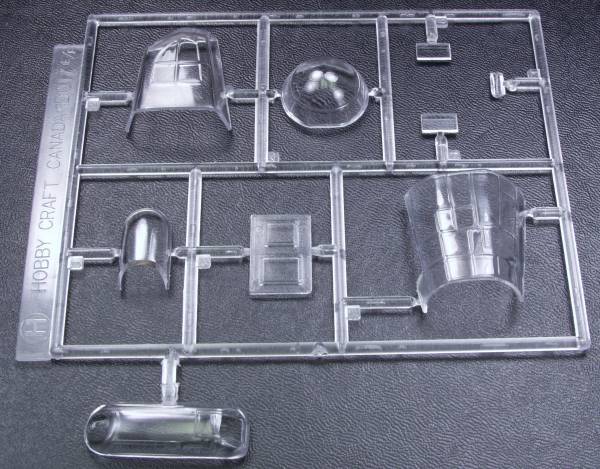
The decals are thin looking and have a flat finish and are in register. They include markings for two aircraft, the swastikas are the assembly variety. No stencils are supplied. I have not heard any complimentary comments made about Hobbycraft decals so buyer beware. See photo below.
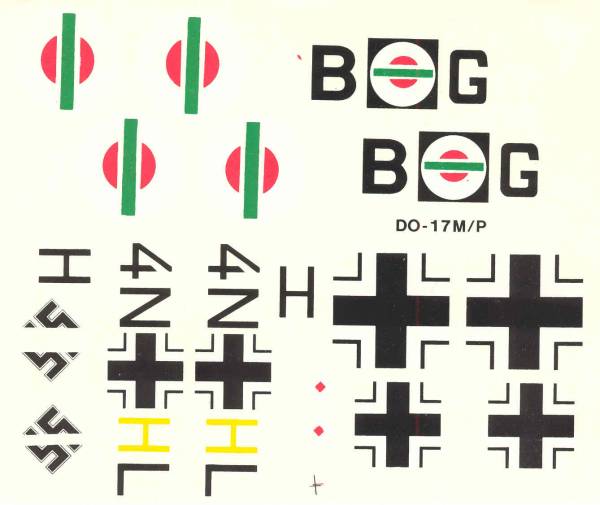
The instructions are printed on a long sheet folded in thirds so that its about 8 1/2" x 11" in size and has 6 panels. The first panel has a list of kit features, a color chart with color names, RLM numbers and Floquil, Humbrol and Model Master color numbers, and an icon chart. The next three panels are assembly instructions and the last two have painting and marking instructions.
After Market Goodies
These aren't really goodies so much as necessities for this kit if you want to come anywhere close to reality with the model. The Squadron 9564 Do 17E/M/P replacement canopy set #1 and Squadron 9565 Do 17E/M/P replacement canopy set #2 are vacuformed replacements for the clear parts that are both thin and clear and have raised frame lines, some of which are better than others. Both sets are required. They do require some modifications to be done to the fuselage but that is necessary to correct errors in the kit itself. The sets include a diagram of where to cut the fuselage. Photos of the parts and scans of the instruction sheets are shown below.
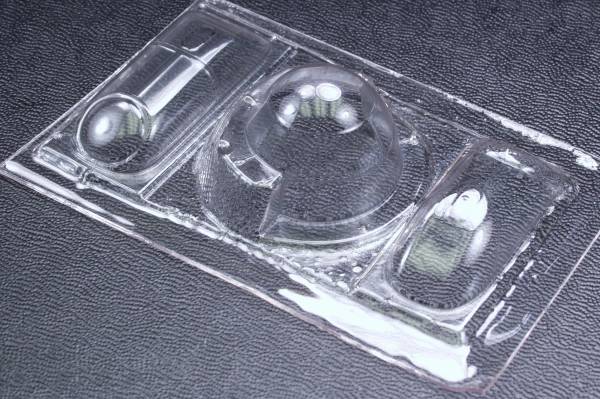
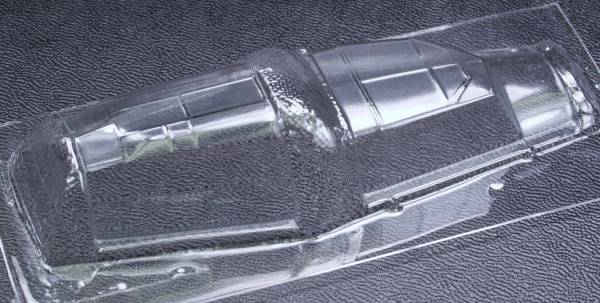
Since I really didn't care at all for the kit supplied engines, these little gems from Vector [48-011b] looked like the cats meow. Please note these will not fit the kit nacelles. This is a fairly common problem due to the plastic parts being way over thickness wise but in this case it is made worse due to the fact that the cowlings themselves are undersized compared to drawings I have so new cowlings will need to be made in order to use them. The parts are molded in a gray resin with little to no flash. The cylinders fit into the crankcase easily. While push rods aren't supplied the holes are there in the crankcase and wire can be cut and fitted easily. The wire is not supplied. The parts had no visible pin holes or other defects. See photo below.
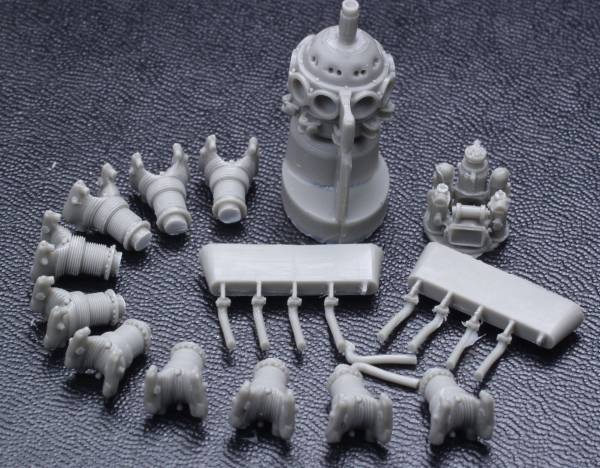
Conclusions
The kit has a number of inaccuracies, some that are easy to fix and others that are not. The major problem, known to the modeling community as the banana problem, can be fixed as described here Do 17 Banana fix. One of the other issues relates to inaccuracies in the cockpit glazing which can be taken care of with a 2 sets of Squadron replacement glazing. These require some surgery as well so this kit definitely isn't for those squeamish about using a razor saw. Other items will be dealt with as the model proceeds. After the banana fix the first order of things to do would normally be to work on the front office. There was a rumor that an after market interior parts may become available but I wouldn't hold my breath. Although there is a lot of glazing, the window size is small and I not sure that a lot of the interior will be all that visible.
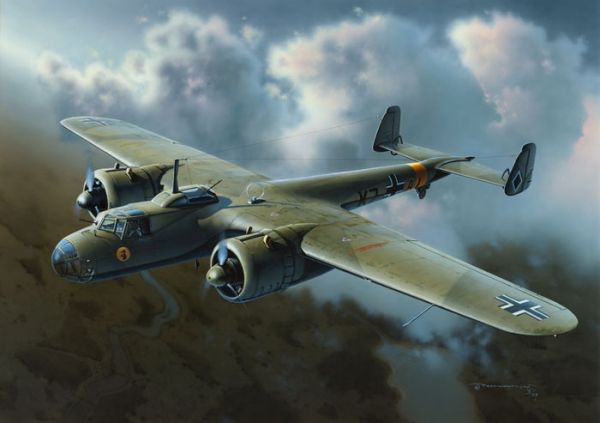
Links to kit build or reviews
References
Warplanes of the Third Reich by William Green
AirDOC Photo Archive No. 3 Dornier Do 17 E-Z by Manfred Griehl
Dornier Do 17 by Edward Kocent-Zielinski
The Flying Pencil by Heinz J. Nowarra
Updated 2/26/12